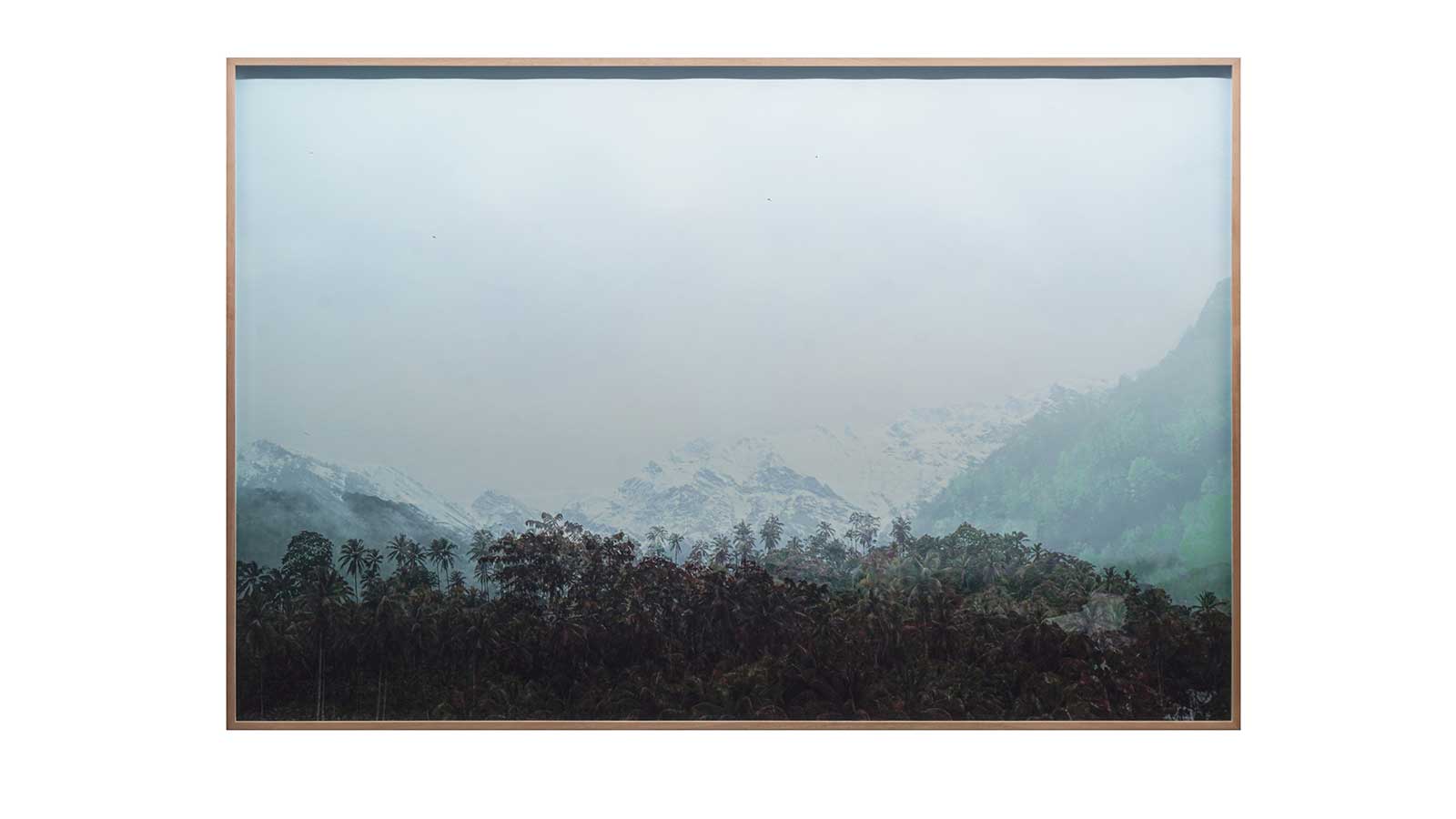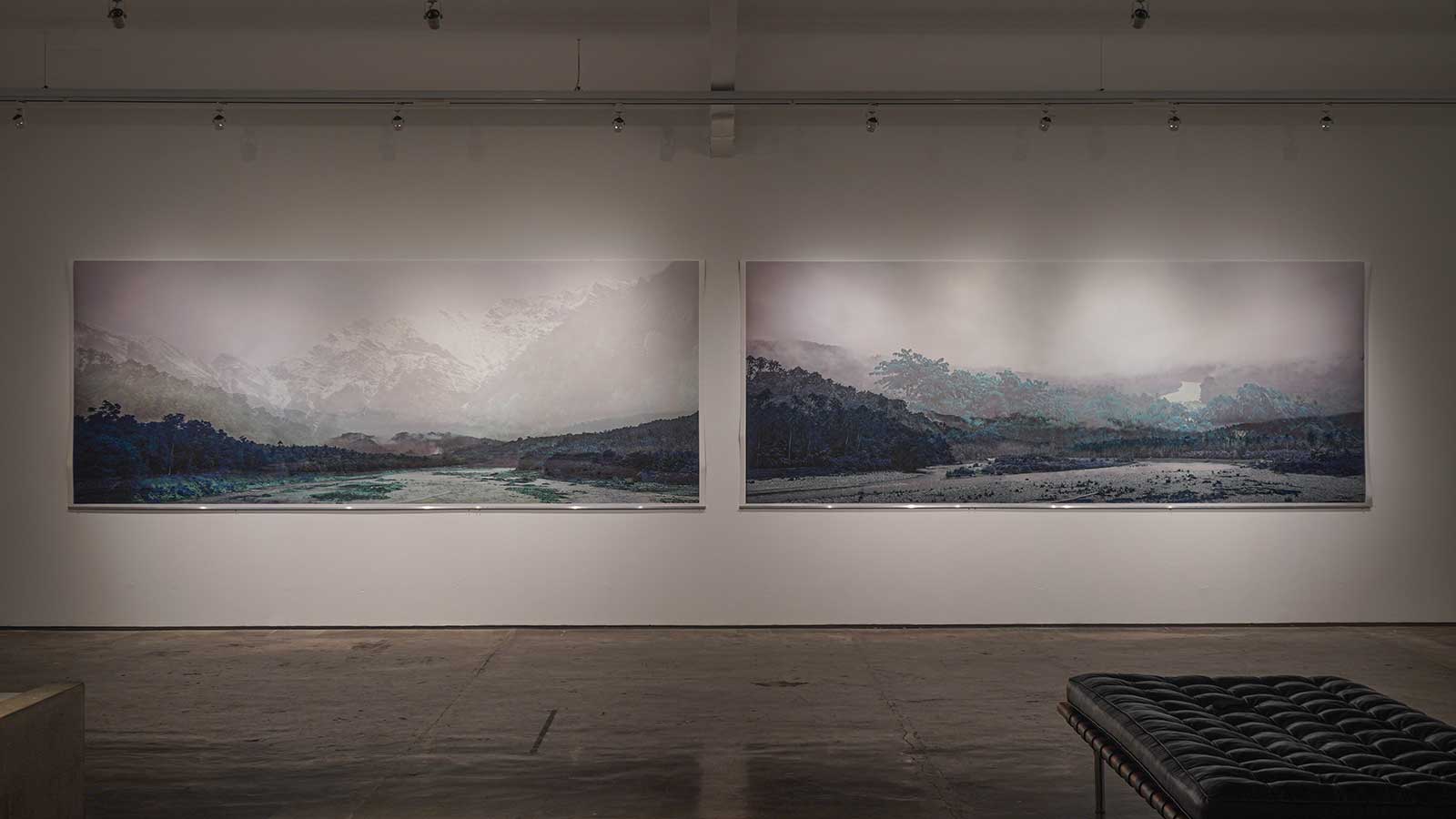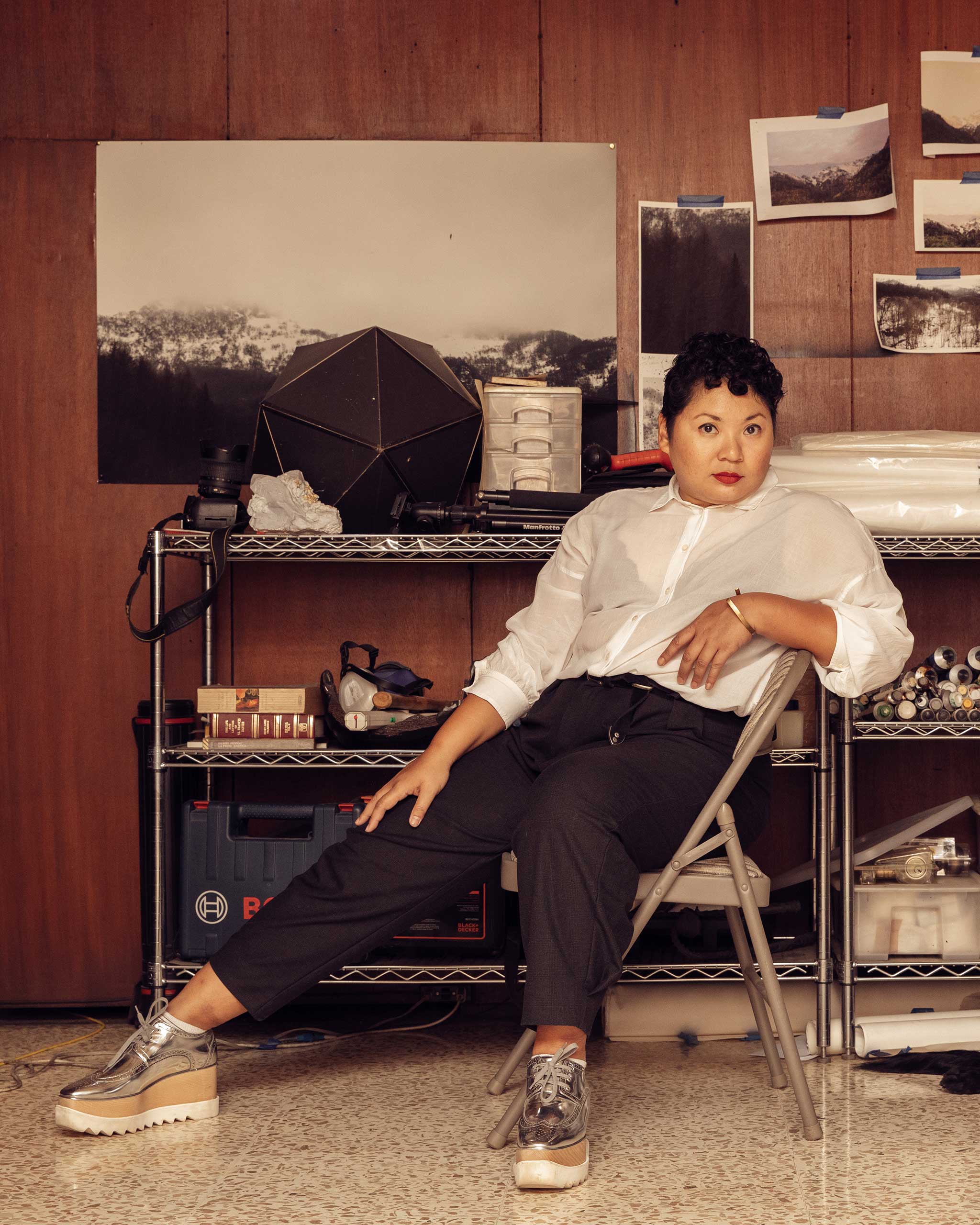Courtesy of Lui Medina
Lui Medina was at an artist’s residency in the medieval hilltop village of Caylus, a little bastide in the Midi-Pyrennes of France that appears frozen in time. “It has only one café, one deli, a market that pops up once a week, and only one bus that comes to town in the morning. There wasn’t much else to do except to go on walks,” Lui describes. Her residency program DRAWinternational offered walking maps to resident artists so they could explore on their own. “These maps were highly detailed, depicting every little pathway, identifying if they were public or private. The mapmakers spend their lives walking and recording every marking on the road.” Thus began the artist’s keen interest in maps.
She observed that Europe is a place where one can traverse entire countries by walking, evidenced by the Camino routes connecting Spain, Italy, and France. “When you live in an archipelago like we do, you cannot always walk from one province to the next” she says. “But that doesn’t stop us from constantly moving.” As a child, from their hometown in Butuan City, Agusan Sur, Lui would accompany her mother, the travel show host Susan Calo Medina, as she crossed from island to island on assignment.

In an interview for the first edition of ALT Philippines in 2020, Lui brought up her inquiry on archipelagic thought. “I think of the world as islands, not nations. The sea becomes different if you think that way.” Visayas-based National Artist for Literature Resil B. Mojares succinctly analyzes our archipelagic thinking in his essay Sailing to Sitangkai (1993) with a sea ballad of the Bajau, reminding us “that we are a moving people. We are a nation of explorers, migrants, voyagers, and vagabonds… We live in a maritime world where seas are not so much barriers as highways.”
While charmingly bucolic, the landscape of Caylus was an immense change from the sultry tropical coasts of Lui’s growing years. Upon returning to the Philippines from France, she read What Makes Landscape Beautiful? The Science of Strollology, a book by Swiss economist, sociologist, and theorist Lucius Burckhardt. Burckhardt considered landscape as an idea that exists in our minds. He suggests that a person walking perceives the landscape in multiple ways. Lui began to ponder related questions: “Where does the shore start and where does it end?”

Her 2016 solo show at Artinfomal, Where Does Landscape Begin? examined Burckhardt’s ideas in the context of her own experience. The exhibition notes point out that the artist’s works “are not drawings of landscapes but drawings about landscapes.” She continued this research during a 2018 residency at the Fusion Gallery in Turin, Italy, where Lui met Italian artist, publisher, and curator Barbara Fragogna. The following year, Lui co-curated the group show Fluido (2019) with Barbara Fragogna. Held at Artinformal Greenhills, in cooperation with the Philippine Italian Association, the show brought together eight artists from Italy and the Philippines who have lived in different parts of the world.
Medina’s recurrent sojourns in Turin were truly pivotal. “For three months, I would just be looking at these snow-capped mountain forests by the Alps. That’s when I started to really focus on the idea of movement between extreme opposite landscapes,” she says. Originally a painter, she eventually expanded to new media, layering photographic images the same way she would build layers in painting. “I am not merely putting together two pictures of places. By combining these landscapes, they become abstracted. I attempt to portray my back-and-forth movements between them, capturing that intangible dimension.” In the same essay mentioned above, writer Mojares similarly contemplates, “A journey… is not only a movement across the earth’s spaces but the spaces of the mind.”

Along with her digital C-prints, Lui also makes graphite drawings of imaginary maps. Abril Cisneros, writer for Lui’s most recent show, elucidates how both mediums are abstractions: “Resisting the totalizing force of the photographic image, superimposition here affirms that the highest-resolution snapshot represents as much as a drawn line on a paper sheet.”
Lui’s artworks have grown progressively larger. She tells us, “I experiment with how big I can go within the gallery space to tackle the vast notion of land masses and landforms. Yet my works center on their interconnectivity, on borders and territories that have expanded and contracted throughout history. I see our islands as connected rather than fragmented. The Philippines doesn’t have a homogenic culture because our indigenous people have all come here from different places.”

This reminds me of something written by Nicola Sebastian for the recently published book Homelands (2022): “Some islands, like Luzon, emerged from the ocean: part volcano, part coral reef. Some, like Luzon’s closest neighbor, Mindoro, broke off and travelled from other land masses… Yet, no island is alone. They belong to an archipelago, and so in a sense, belong to each other. Each island may have its own diverse ecology, but there is constant flow and exchange between them… movement characterizes life in these islands… like the water, it connects and mingles.”
The grandest scale of Lui’s works to date is a 650-cm long print commissioned for Adaptation: A Reconnected Earth (2023), an exhibit at MCAD Manila. When I visited the show, I wondered how they hung such a lengthy unframed print without damaging it. I soon discovered that it took a substantial team of art handlers, with the museum staff documenting each step. The exhibit featured nine artists whose works deal with climate change and environment. Lui rationalizes, “By investigating the relationship of landscapes with human consciousness, my work inevitably touches on environment. I consider how people can imagine landscapes that are already disappearing, topographies that are constantly changing due to severe climate.”

Like the Earth’s interconnectedness that Lui seeks to emphasize, so do her body of works correlate in a trajectory through time. Her monumental print for MCAD transferred to her recently concluded 2023 solo show at Artinformal, Untitled (Notes on an Imaginary Island). I asked why she decided to present it so immediately again, and she replied, “One artwork is not an individual piece but a continuation of my practice as a whole. Showing the same work in different spaces and at different times allows me and my audience to engage with it in different ways.” Indeed, recalling her 2016 show Where Does Landscape Begin? the exhibition notes quoting Polish author, journalist and photographer Ryszard Kapuscinski still apply: “The oneness of the world, so unachievable in the realm of empirical reality, lives in our minds, in the superimposed layers of tangled and confused memories.”
Lui Medina’s work will be presented by Artinformal gallery at ALT Philippines 2024: February 21 to 25, SMX 4, Mall of Asia Complex.
- From Some Islands Ago, We Dream
- 124 Days and Counting: Photographer Raena Abella Travels the Philippines’ 7,641 Islands By Land
- It’s True, Following Grannies Is The Ultimate Travel Hack Right Now
- Gab Mejia Highlights Filipino Coastal Communities In His #CreateCOP28 Winning Entry, ‘The Passage of Storms”
